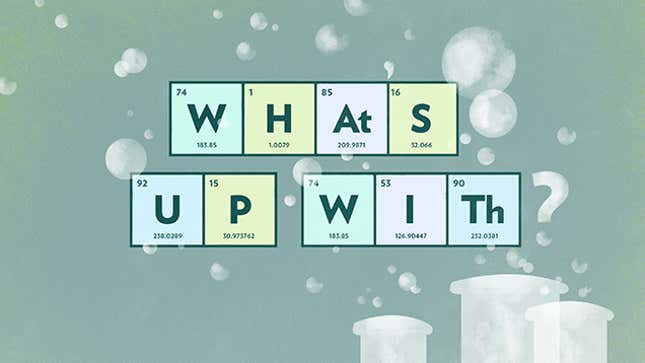What's Up With Phthalates?
In Depth

Phthalates are ubiquitous. They are from our plastics, fragrances, medical devices, baby toys, nail polish, product packaging, vinyl gloves and floors, pacifiers, baby powder, shampoo and lotions. Studies have even shown that women and babies pee high levels of phthalates. Basically, like Enrique Iglesias’ love, you can run, you can hide, but you can’t escape a phthalate. This all sounds menacing, but is it?
But, before that question can even be answered let me just tell you right now, you pronounce phthalates like, “thigh-lates.” That “ph” is silent. (Now I want someone to name their baby Phtharper and be all, “No the ph is silent!” For the rest of her life.)
Onward. Phthalates are a little difficult to understand. Even the customary Google search only muddied the waters of my English major (and Russian studies minor) brain. So, I reached out to Jennifer Reid, a chemistry professor, who wants me to make it clear, that while her expertise is not phthalates, she does know her way around a chemical or two.
What is a phthalate? It’s a man-made chemical. You can probably thank the petroleum companies for that. And Reid describes them as a small molecule, so they go in between other polymers (think: big chains of molecules) and make them nice and wobbly. Kind of like boozing up your grandma at Thanksgiving, phthalates make polymers a little more flexible and fun.
After time, phthalates break down and escape the stiff confines of the polymers. Like me, running away from dinner with my in-laws. So, you know how when you found your old high chair and the plastic was all cracked and brittle? That’s because the phthalates were gone. But that’s not all phthalates do. Since they make things nice and soft you can find them in smoothers, hairsprays (because they make a nice flexible film over your hair), and in fragrances, because they help the scent stick to your skin.
So, what’s the problem? Well, phthalate haters (“phthaters” as I call them) argue that they can cause developmental disabilities and delays in children, ADHD, metabolism problems, maybe even cancer, and one study suggested “less masculine play in boys.” Which, sounds fine to me. In fact, the internet and conversations with friends yielded no shortage of bad things people wanted to blame on phthalates. One friend, told me she suspects phthalates could be linked to autism, which isn’t just something she pulled off an internet forum. This link is mentioned here, in Scientific American. It seems like phthalates have been blamed for everything except stealing the Lindberg baby and being the Zodiac killer.
Of course, just because phthalates have been linked to something, doesn’t mean they caused that thing. Phthalates were totally just holding onto their friend’s pot, they promise. In Freakonomics, authors Steven D. Levitt and Stephen J. Dubner explain that just because two things are linked or correlated, doesn’t mean their relationship is causal. For example, doctors used to believe that ice cream caused polio because polio was found most often in kids and peaked in the summer. As we know now, that correlation did not equal causality.
Additionally, there used to be a whole field of medicine that argued that if a woman saw something while she was pregnant it would make an impression on her fetus. So, if you were scared by a bear during your pregnancy and you had a hairy baby, well there you go. But we all know that’s not true, because if it was, both my kids would look like Glenn Close because of all those episodes of “Damages” I binged on during their gestation.
And therein lies the problem with so many of these chemicals. You can make links, but proving causality? Well, that’s a lot harder. Harder because you can’t actually put a baby in a lab and treat it like a lab rat and because in our daily lives we are exposed to so many chemicals it’s hard to say what causes anything. Also, all phthalates are not created equal. There are a lot of different types of phthalates and some are harmless and some are pretty much banned from the mouths of your babes. In 2008, the phthalates dibutyl phthalate (DBP), butylbenzyl phthalate (BBP), and di(2-ethylhexyl) phthalate (DEHP) were banned from children’s toys at levels greater than .1%.
-

-

-

-

-

-

-

-

-

-

-

-

-

-

-

-

-

-

-

-

-

-

-

-

-

-

-

-

-

-

-

-

-

-

-

-

-

-

-

-








































